I am having issues on keeping Marge near Homer and Herb near Lucia to avoid this above-line (check the image). Basicly i need to keep married couples together and push aside brothers to fix the lines from mixing. Here is my source code:
digraph G {
edge [dir=none];
node [shape=box];
graph [splines=ortho];
"Abraham" [shape=box, regular=0, color="blue", style="filled" fillcolor="lightblue"] ;
"Mona" [shape=box, regular=0, color="red", style="filled" fillcolor="pink"] ;
a1 [shape=diamond,label="",height=0.25,width=0.25];
{rank=same; Abraham -> a1 -> Mona};
"Herb" [shape=box, regular=0, color="blue", style="filled" fillcolor="lightblue"] ;
"Lucia" [shape=box, regular=0, color="red", style="filled"fontcolor="", fillcolor="pink"] ;
"Homer" [shape=box, regular=0, color="blue",fontcolor="blue", style="bold, filled" fillcolor="lightblue"] ;
"Marge" [shape=box, regular=0, color="red", style="bold,filled"fontcolor="red", fillcolor="pink"] ;
p2 [shape=diamond,label="",style="",height=0.25,width=0.25];
{rank=same; Herb -> p2 -> Lucia };
{rank=same; Herb; Homer}
b1 [shape=circle,label="",height=0.01,width=0.01];
b2 [shape=circle,label="",height=0.01,width=0.01];
b3 [shape=circle,label="",height=0.01,width=0.01];
{rank=same; b1 -> b2 -> b3};
a1 -> b2;
b1 -> Herb;
b3 -> Homer;
"Gendry" [shape=box, regular=0, color="blue", style="filled" fillcolor="lightblue"] ;
Herb -> Gendry;
p2 -> c2;
c1 -> Bob;
c3-> John;
{rank=same; c1 -> c2 -> c3}
c1 [shape=circle,label="",height=0.01,width=0.01];
"Bob" [shape=box, regular=0, color="blue", style="filled" fillcolor="lightblue"] ;
c2 [shape=circle,label="",height=0.01,width=0.01];
"John" [shape=box, regular=0, color="blue", style="filled" fillcolor="lightblue"] ;
c3 [shape=circle,label="",height=0.01,width=0.01];
p1 [shape=diamond,label="",style="bold",height=0.25,width=0.25];
{rank=same; Homer -> p1 -> Marge};
{rank=same; Bob; John; Gendry}
}
